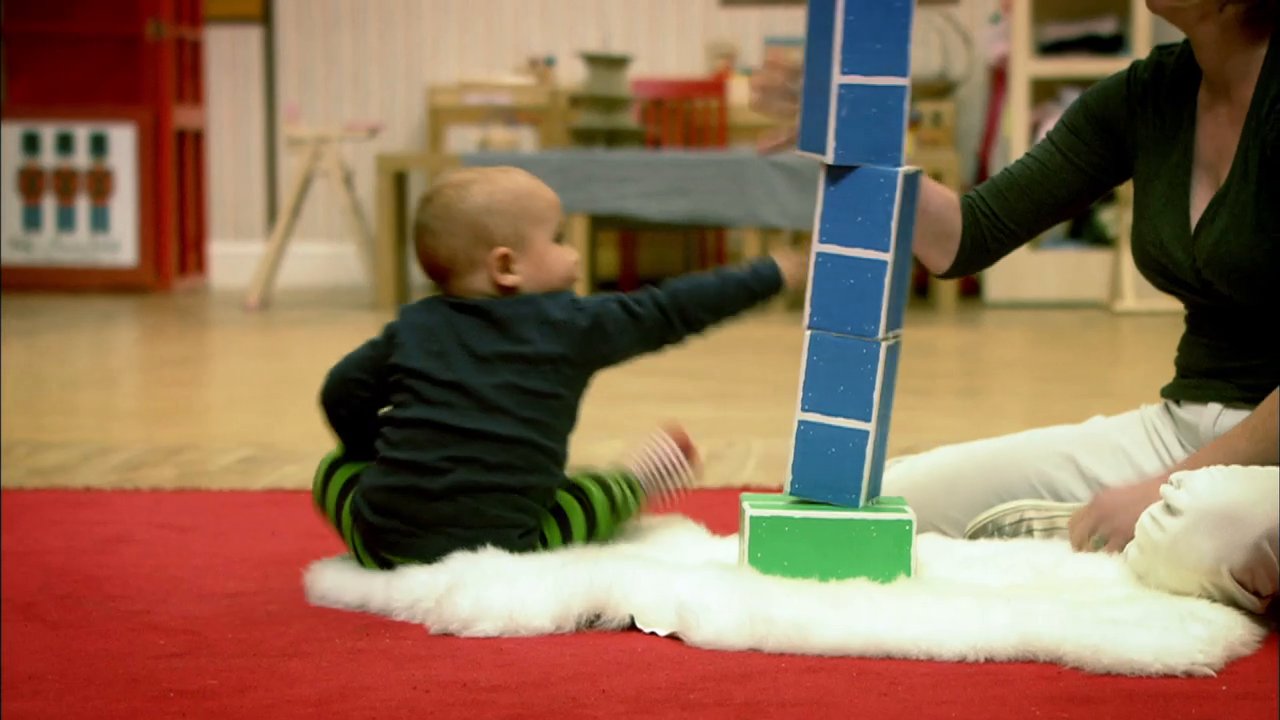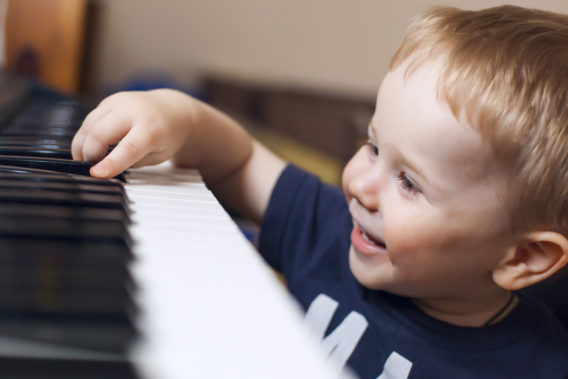
There are lots of games you can play to help promote your toddler’s thinking and cognitive development.
Here are some simple ideas that will help to stimulate your toddler’s thinking.

You don’t need to over-think the thinking games you play with your child. Here are a few games and ideas to get your child’s mental juices flowing.
See how long it takes for an ice cube to melt on a tray on a sunny windowsill.
Play with old-fashioned scales (scour the charity shops). Try to make heavy and light objects balance with the weights.
Ask your preschooler to estimate how many potatoes will fit in a bowl as you prepare dinner. Let them guess and then count them out.
Choose five items with your toddler (perhaps a stick, stone, orange, cork and sponge) to take to the bathroom or kitchen sink and test.
Collect and compare various see-through, solid and reflective surfaces (for example candy or sweet wrappers, paper, mirror, tracing paper).
Negation games can be helpful for parents who are helping older children understand basic concepts and ‘rules’. It is great fun and very popular with children as it makes them feel grown up and knowledgeable. They love the audience participation of shouting ‘no!’ when you do something obviously wrong or silly, such as trying to use a straw to eat your food, using a knife and fork to eat your soup or putting her socks on her hands instead of her feet. She’s learning how the world works and humour can really boost her confidence.
Explore what colours different coloured paints produce when mixed together. Using primary colours, encourage your toddler to mix them together to produce new colours – blue and yellow to make green, red and white to make pink, red and yellow to make orange.
Teach and assess whether your child understands the concept of living and non-living things. If you are out and about on a walk you can ask your toddler whether various things are alive (for example the slide, a cat you walk past, flowers on the pavement, a moving bus). Initially, simple rules such as ‘things that move are alive’ or ‘things with faces are alive’ might be one of the first concepts your toddler holds in her head. Over time, their concepts of what is living will become more and more sophisticated so that she understands that a robot dog is not the same as an actual dog, even though it has a face and moves and barks – it’s not alive. That said, it is perfectly normal to have a global anthropomorphic attitude to some non-living things and treat them as alive, for example ascribing human emotions to non-living things like little pebbles. It is probably a side effect of our huge potential for empathy and dedication of brain tissue to recognising faces and facial expressions.
Take a collection of safe-sized objects (for example cotton bobbins) and ask your older toddler to sort them into piles of all the red ones or all the wooden ones. See if they understand the concept and can sort a variety of items according to colour, size, or another category. These categorisation skills will improve over time.

Categorise and spot food based on its colour, size and whether it’s a fruit, root, leaf or from an animal.
Ask your child to put the baby animals with their mummies. Start with domesticated animals, then wild animals before making it more difficult – animals where mummy and baby do not resemble each other (for example a butterfly and caterpillar).
Ask your child to categorise each face they see into old, young, man, woman, fair, dark.
Look for opposites in books and when you are out and about. For example, push the pram backwards and forwards or pick up big footballs and small tennis balls. This helps your child to understand these adjectives as describing words.
Fat – thin
Living – non-living
Old – young
Big – small
Empty – full
Rough – smooth
Dark – light
Forwards – backwards
Hot – cold
And so on.

Create musical instruments with items from your house and garden. Playing homemade musical instruments not only makes a satisfying noise for your toddler but helps your toddler to understand cause and effect and lets them test different materials and sounds.
Plastic bottles can provide lots of instruments. You can fill bottles with different amounts of water and blow across the neck of the bottle to hear its unique sound. Which bottles (with deep or shallow water) produce the highest and deepest notes? You can also fill bottles with different items (for example rice or pistachio shells) and re-seal the top. Your toddler will love the sound, sight and feel the rice or nut shells sliding up and down the bottle.
Ask your toddler to listen and match the sounds that you make e.g., farmyard animals and sounds from around the house. Remember to take turns and let her choose some sounds for you to copy.
Can your child copy you and whisper, talk or shout? Can she describe whether you are whispering, speaking in a normal tone or shouting?
Toddlers are fascinated by faces and their expressions and have an innate capacity to both read and pull faces. Using your faces, you and your toddler can play lots of fun games that help her to understand faces and the emotions they are conveying.
There is evidence that boys (in general) have more trouble reading facial emotions than girls. This is particularly true of boys (and girls) on the Asperger’s spectrum. These games may be particularly helpful for these children.

Can your toddler describe what the babies, children and adults are feeling in a picture book by looking at their facial expressions and listening to the story? Say, ‘The duckling was lost! How did she feel, do you think? How would you feel if you were lost?’
Can your older toddler remember and match the pairs from a pack of cards? Start with only two pairs and add in more cards as she gets better. Choose a bright, compelling pack as toddlers love to try and concentrate and remember.
Place all the cards from a pack face down on a low table. Taking turns with your child, turn over two cards. If the cards match, the player keeps them. Children have very good memories, especially when it comes to spatial memory.